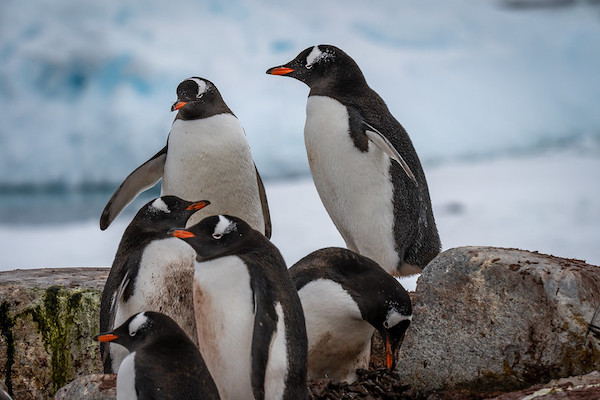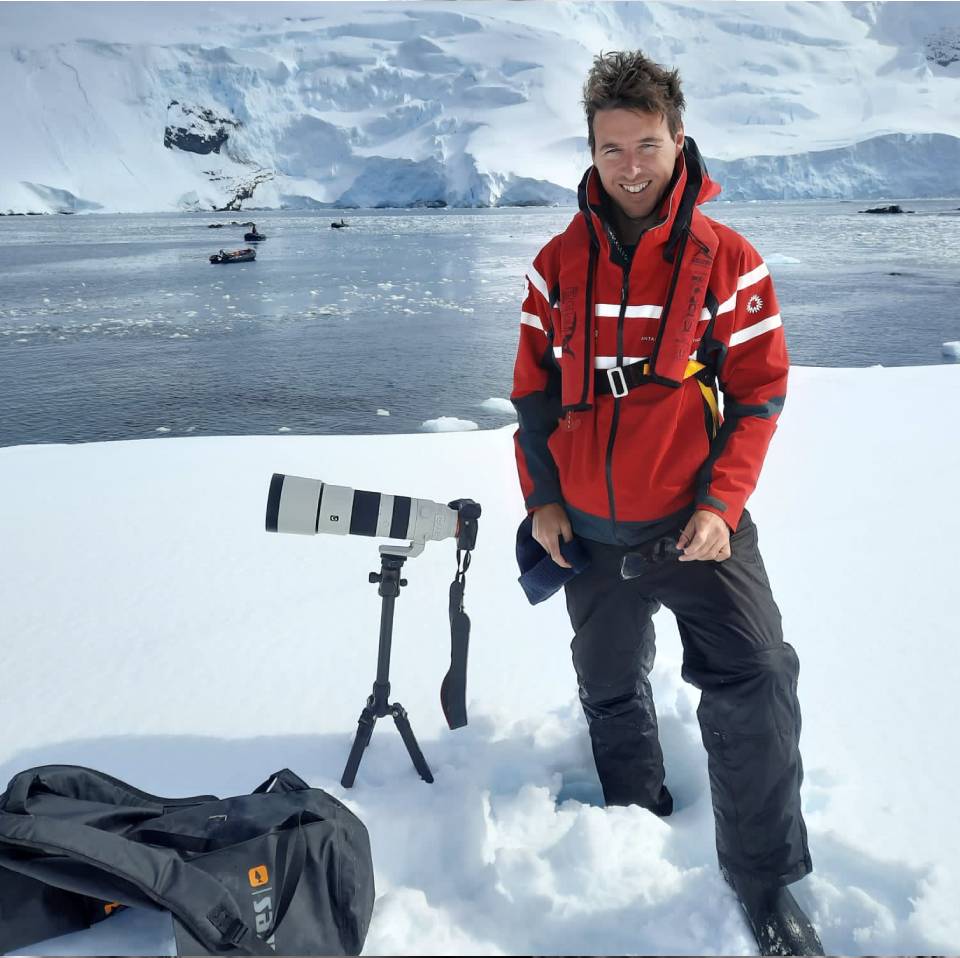Antarctica, the frozen wilderness at the bottom of the world, is home to a rich diversity of wildlife, including seals, whales, seabirds and, of course, plenty of penguins.
For those embarking on an Antarctic cruise, the opportunity to encounter these charismatic birds in their natural habitat is a highlight of the trip. Every time I visit Antarctica I just get mesmerized by these beautiful birds, they are truly a joy to watch.
However, before you book your trip, it is worth noting what penguin species you will actually encounter given that most Antarctic cruises do not see all species. I cannot recall how many people I have spoken to me who assumed they would encounter emperor penguins on their cruise, only to get there and be disappointed.
For people embarking on a traditioanl 10-day Antarctic Peninsula cruise, you are most liely to encountet three penguin species; Gentoo, Adélie, and Chinstrap Penguins. These three species are by far the most commonly seen, although there is always the slight chance you may encounter another species.
Please note that It is important for visitors to practice responsible wildlife viewing, respecting guidelines to maintain a safe distance and minimize disturbances to the penguins and their habitats. Alwayts maintain a distance of at least 5 meters when viewing penguins.
Below we look at each Antarctic penguin species and what itinerary you will need to see them.
Penguin species that you will see on a classic Antarctica Peninsula itinerary
Gentoo Penguin
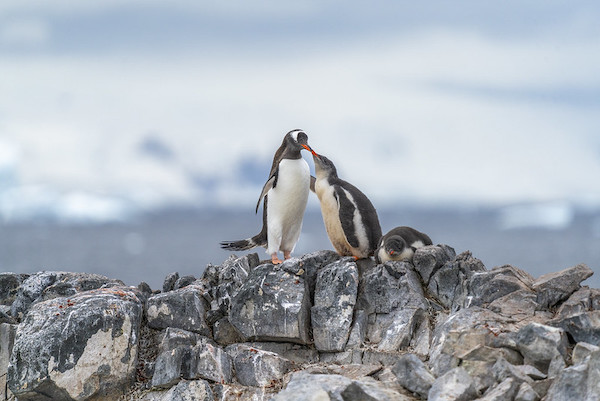
Although not the most common species of penguin in Antarctica, gentoos are most commonly seen on cruises given their prevalaence in the Antarctic peninsula region. The Gentoo Penguin is one of the larger species of penguins and is easily recognizable by its distinctive white patch above its eyes and bright orange-red beak.
These penguins are widely distributed across the Antarctic Peninsula and the sub-Antarctic islands, making them a common sight for visitors to the region. Gentoo Penguins are known for their playful and curious nature, often approaching boats or visitors on shore.
Adélie Penguin
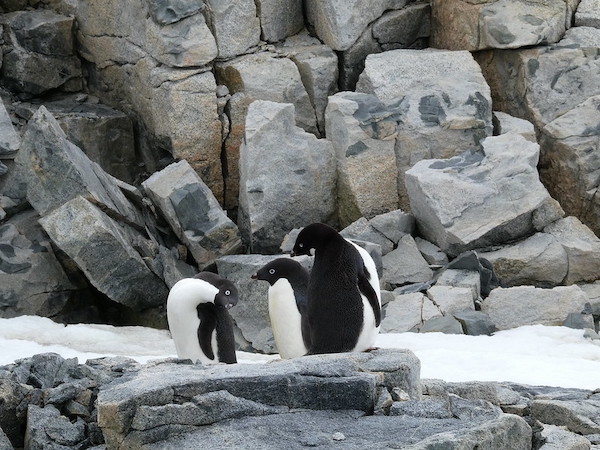
Adélie Penguins are an iconic species of penguin given their classic tuxedo look. They are recognisable for their striking black and white plumage and distinctive white eye rings. These penguins are expert navigators of the icy terrain, using their powerful flippers to propel themselves across the snow and ice.
Adélie Penguins primarily inhabit the coastal areas of Antarctica, where they build their nests from stones and pebbles. During the summer breeding season, these colonies can be bustling with activity as penguins engage in courtship displays, nest-building, and raising their chicks. Like gentoos, Adélie penguins are known for their inquisitive behavior and often approach humans without fear.
These penguins are seen on almost all Antarctic itineraries.
Chinstrap Penguin
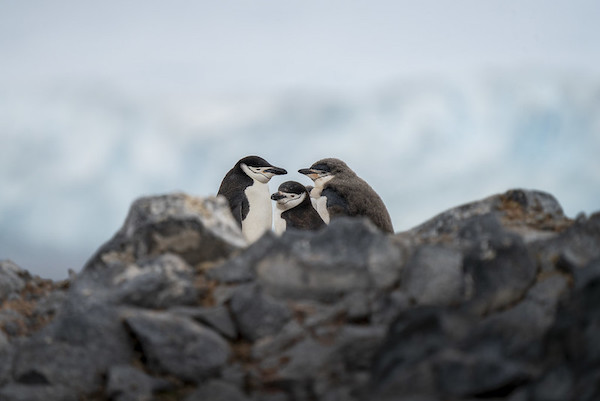
The Chinstrap Penguin gets its name from the narrow black band under its chin that resembles a chinstrap. These penguins are medium-sized and are often found in large colonies along the rocky shores and cliffs of Antarctic islands. Chinstrap Penguins are agile climbers, using their strong feet and sharp claws to navigate steep terrain.
They feed primarily on krill and small fish, diving into the frigid waters to catch their prey. Like Gentoo and Adélie Penguins, Chinstrap Penguins are known for their vocalizations, which can range from braying calls to high-pitched chirps, especially during the breeding season.
Penguin species that can be seen on Antarctic itineraries that include the Falklands and South Georgia itinerary
To see the penguin species below, you will need to book onto a Antarctic cruise that includes a visit to the Falklands and South Georgia. These itineraries are fairly common, but they are much longer and therefore, a fair bit more expensive. However, given the amount of extra wildlife you witness, it is defintely worth it if you can afford it. For me personally, South Georgia is the jewel of the Southern Ocean and not to be missed.
Magellanic Penguin
The Magellanic Penguin is a medium-sized species that nests in burrows along the coastal cliffs and sandy beaches of the Falkland Islands. These penguins have distinctive black backs and white bellies with a crescent-shaped band of black across their chest. They are known for their braying calls and can be spotted in large colonies during the breeding season.
King Penguin
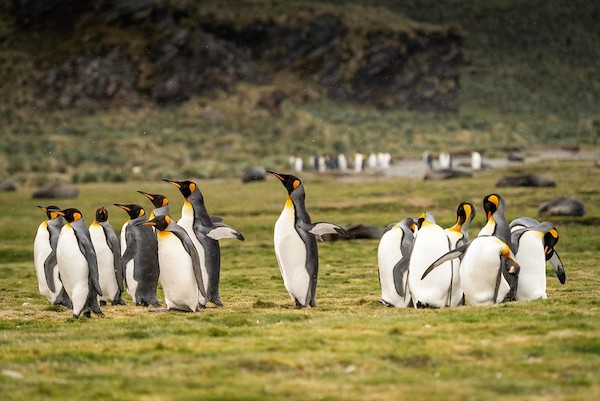
King Penguins are the second-largest species of penguins, known for their striking orange-yellow plumage on their necks and chests. They breed in large colonies on the subantarctic island of South Georgia, with thousands of individuals gathering during the breeding season. King Penguins are excellent swimmers and can dive to great depths in search of fish and squid.
Rockhopper Penguin
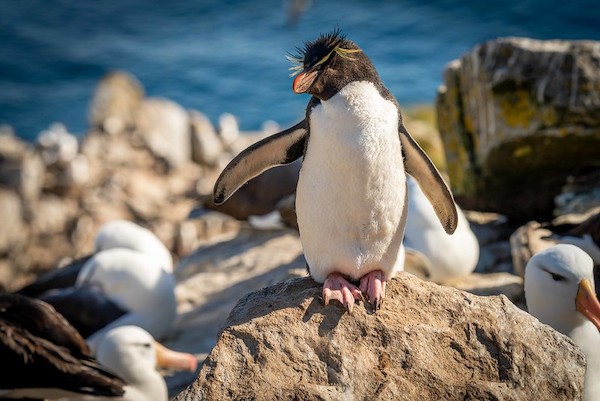
Rockhopper Penguins are small penguins characterized by their distinctive crest of yellow feathers on their heads. They are agile climbers and can navigate steep cliffs and rocky terrain with ease. Rockhopper Penguins breed in colonies on both the Falkland Islands and South Georgia, often in dense vegetation or among rocky outcrops.
Macaroni Penguin
Macaroni Penguins are closely related to Rockhopper Penguins and are known for their flamboyant yellow crests and bright red-orange bills. They breed in large colonies on the rocky shores of South Georgia, where they form noisy and bustling communities during the breeding season. Macaroni Penguins feed on krill and small fish, diving into the cold waters around the islands.
The elusive Emperor Penguin
Emperor Penguin
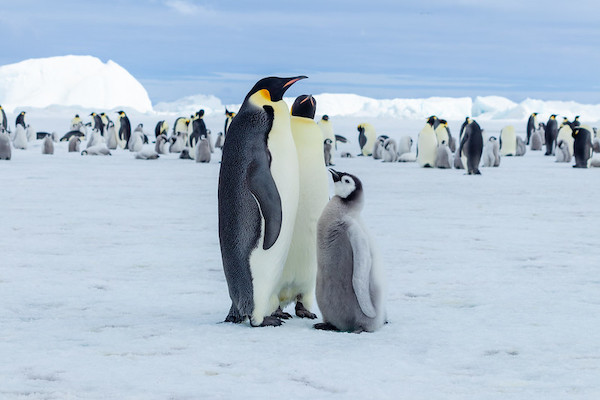
These beautful birds are the largest of all penguins species and rarely seen. Some specialized Antarctic expeditions, particularly those focused on wildlife and photography, may include visits to remote locations such as the Ross Sea region or the Weddell Sea. These areas are known for having Emperor penguin colonies, although access can be limited due to ice conditions and seasonal variations.
For the best chance to see Emperor penguins, you should choose an itinerary that includes a visit to Snow Hill and hope for good ice conditions.

